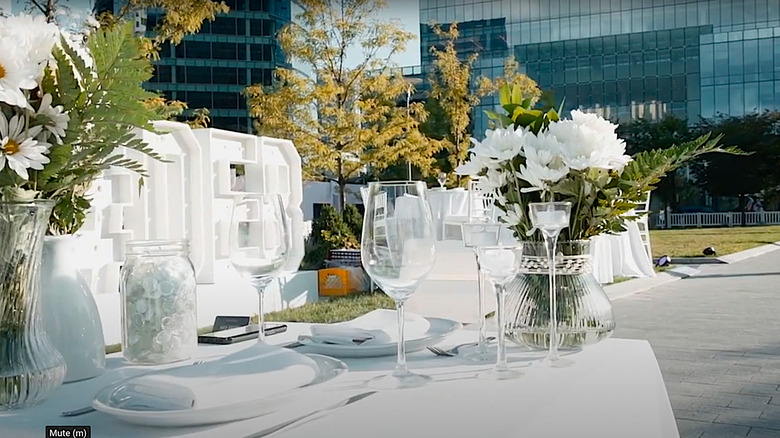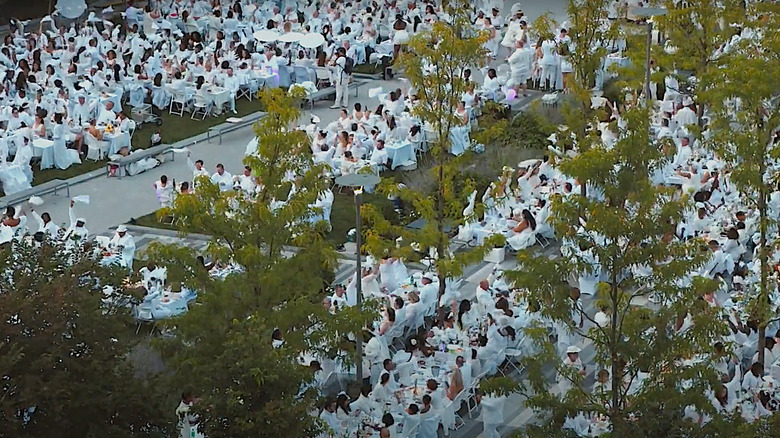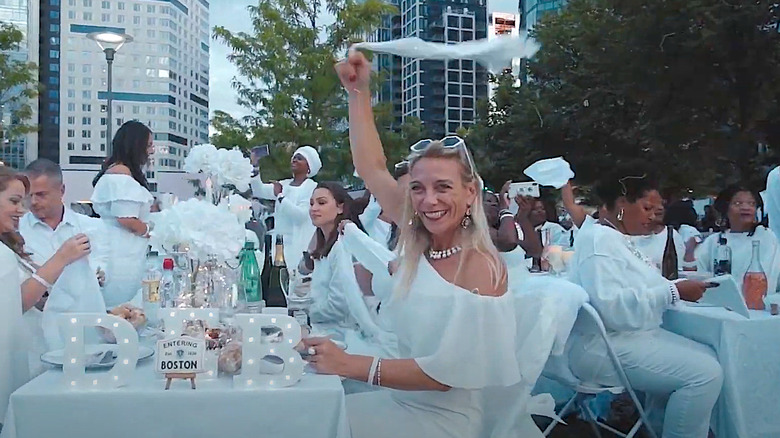Dîner En Blanc: The Pop-Up Dinner Party Heard Around The World
They come from all walks of life. Arriving from east, west, north, and south, like nomads on a mission. First one, then two, then a dozen, a hundred, and more. Everyone, it seems, heeding a silent call to converge at a central location. And every single one of them is dressed head-to-toe in white. It's Dîner en Blanc, a worldwide phenomenon that draws thousands of people together at locations around the globe for a one-night celebration of food, wine, and friendship. And while it may appear impromptu, every Dîner en Blanc is the result of months-long planning that choreographs the arrival and set-up down to the minute.
It all began in Paris. The year was 1988. François Pasquier had recently returned to the City of Light after living abroad in Tahiti for several years. In an effort to reconnect with his old friends, Pasquier suggested they meet at Bois de Boulogne, an urban park more than twice the size of New York City's Central Park. To make it easier to spot one another, Pasquier suggested everyone dress in white. "The dinner was such a complete success that we decided to repeat it again the following year, and again, and again," he told Dîner en Blanc Paris in 2018 on the 30th anniversary of the debut event. "Eventually, we had more than a thousand guests." Two decades later, in 2009, Pasquier's son, Aymeric, hosted the first Dîner en Blanc outside France — in Montreal — and heralded the start of a global phenomenon.
Global expansion
Prior to the 2009 Montreal event, Dîner en Blanc was largely unknown outside of France — but that was about to change. In 2011, Aymeric Pasquier brought Dîner en Blanc to New York City. A year later, Bravo TV's "Top Chef Masters" featured a Dîner en Blanc elimination challenge filmed at the first Dîner en Blanc in Las Vegas, and the rest, as they say, is history. In 2012, Pasquier founded Dîner en Blanc International, an oversight organization formed to partner with hosts at the local level to ensure Dîner en Blanc standards. By 2022, Dîner en Blanc had a presence in more than 120 cities spread out among 40 countries worldwide, but you can't just show up. There's a process — and, in most places, a waiting list.
Here's how it works. If you've never attended Dîner en Blanc and you don't know anyone who has attended, your best bet is to sign up for the waiting list in your city of choice via Dîner en Blanc International. If you know someone who has attended previously, you can ask them to invite you. If you've already attended a Dîner en Blanc, you will automatically get an invitation for the following year. Once the date is set, invitations go out in phases until the event is sold out. Previous attendees are in phase 1, guests of previous attendees are in phase 2, and people on the waiting list are in phase 3.
Got it! Now what?
Securing an invitation is only the beginning. You'll know the date, but the exact location remains a secret until right before it happens. And once you get word of the secret location, you'll have to carry everything, and we mean everything — table, chairs, table settings, and (unless your site offers catering) food. And everything, including tables and place settings, must be white. It is, after all, Dîner en Blanc — dinner in white.
Somehow, it all comes together. Boston resident Anna Berezina first attended Dîner en Blanc in 2016. She was so struck by the event and camaraderie that she became a local host in 2017. City hosts work directly with Dîner en Blanc International to ensure standards, but each host has the leeway to showcase the flair and personality of their city, usually by working with local officials to secure iconic locations.
Berezina, who led Dîner en Blanc Boston for three years prior to a pandemic-related pause, hosted up to 1,500 guests annually at Boston landmarks, including the Rose Kennedy Greenway, City Hall Plaza, and Seaport Common. "Our guests put a lot of faith in us to delight them with something unexpected, and that feeling of wonder never gets old," Berezina told Tasting Table. "I think it's that element of surprise — no matter how many times you do it, it's always different. Also, the community is incredible. It's a warm, diverse, welcoming group, and you can't help but want to be a part of it."


